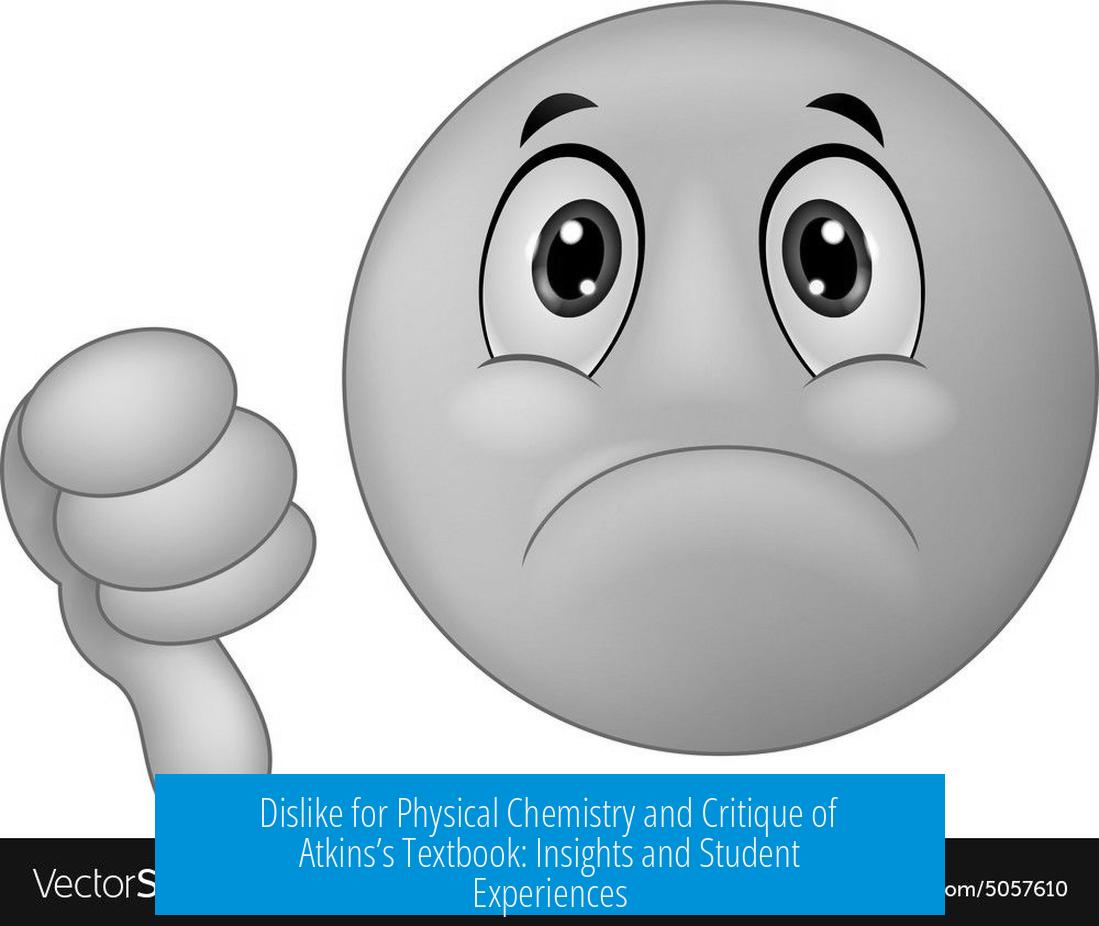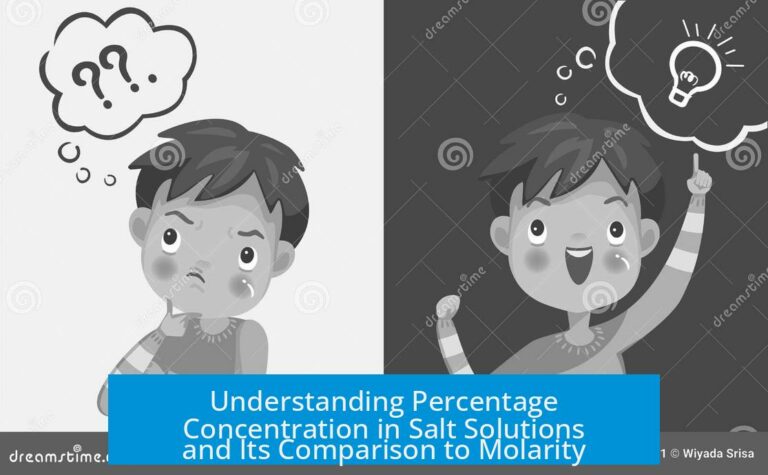Understanding the Dislike for Physical Chemistry and Atkins’s Textbook
Many students and chemists express a distinct dislike for physical chemistry (Pchem) and its commonly used textbook by Peter Atkins. The reasons involve the subject’s mathematical rigor, the teaching styles, and the textbook’s approach to complex topics. This article examines the challenges and criticisms linked with Pchem and Atkins’s book, as well as the contrasting positive views.
1. General Dislike and Difficulty with Physical Chemistry
Physical chemistry is widely regarded as a demanding subject, even by those who appreciate its importance. Campus voices often describe it as tough and strenuous. One student shared, “I cried my way through Pchem in college,” indicating the emotional and intellectual strain involved.
Challenges mainly stem from:
- The subject’s heavy reliance on mathematics and physics.
- The abstract nature of fundamental concepts like thermodynamics and quantum mechanics.
- The feeling that practical applications are narrow, causing frustration about real-world relevance.
Many students recognize the utility of Pchem concepts but prefer to use them without engaging deeply with their mathematical foundations. For example, “I just don’t want to do the math to use the concepts,” reflects a common sentiment.
2. Criticism of Atkins’s Physical Chemistry Textbook
Peter Atkins’s textbook remains a staple in many universities, yet it faces notable criticism. Some professors avoid it due to personal disagreements. One professor reportedly refused it, calling Atkins “an asshole.”
Common complaints include:
- The mathematical explanations sometimes assume that students already understand complex ideas like infinitesimals, leading to confusion.
- Key topics, such as quantum mechanics, often receive insufficient foundational explanation. For instance, the introduction of Hermite polynomials in solving the Schrödinger equation without adequate detail.
- It prioritizes mathematical derivation over developing physical intuition.
Despite these critiques, some chemists appreciate Atkins’s rigor and clarity, especially those with a theoretical focus.
3. Pedagogical and Mathematical Challenges in Physical Chemistry
The difficulty in Pchem correlates strongly with students’ mathematical background. Many chemistry undergraduates lack sufficient training in differential equations, calculus, and physics, which complicates understanding topics like quantum theory.
Physical chemistry relies on solving partial differential equations and applying approximation methods such as power series expansions—concepts that are unfamiliar without formal coursework.
| Mathematical Prerequisites | Application in Physical Chemistry |
|---|---|
| Differential Equations | Formulating and solving the Schrödinger equation |
| Calculus (including infinitesimals) | Thermodynamics and rate equations analysis |
| Linear Algebra | Quantum mechanics, molecular orbitals |
Without this background, students often feel lost in the lessons. This gap is worsened when instructors focus solely on deriving equations instead of tying them to experimental data and applications, which can foster a more intuitive grasp.
4. Positive Views on Atkins’s Book and Physical Chemistry
In contrast, some chemists find Atkins’s textbook fundamental and enriching. These readers highlight:
- The book provides a solid theoretical base essential for advanced study.
- It encourages imagining molecules and their behavior through quantitative principles.
- It aligns well with those comfortable in calculus and physics frameworks.
For such users, Atkins’s text supports a deep understanding that includes both physics and mathematics. Some have read the entire book with enthusiasm, viewing it as a definitive resource.
5. Impact of Teaching Quality on Appreciation of Physical Chemistry
Teaching methods strongly influence Pchem reception. Students praise instructors who make the material engaging and clear. One example is a professor who transformed Pchem into a favorite undergraduate class through clarity and enthusiasm.
Effective pedagogy involves:
- Breaking down complex topics into manageable segments.
- Linking mathematical models to experimental evidence.
- Developing students’ mathematical intuition rather than focusing solely on algebraic correctness.
The discrepancy in teaching quality accounts for the mixed experiences students report, with some loving and others hating the subject.
6. Summary of Students’ Experiences with Physical Chemistry
Physical chemistry is often described as a “meatgrinder,” with dropout rates in courses reflecting its difficulty. It demands more formal math and physics preparation than many chemistry students receive.
Yet, liking Pchem is not mandatory for success in chemistry. Many professionals use Pchem principles regularly without enjoying the study of their derivations.
“Just because physical chemistry is important doesn’t mean you need to love it… Just because you use kinetics or thermodynamics doesn’t mean you have to like them.”
Key Takeaways
- Physical chemistry is challenging primarily due to its heavy math and abstract concepts.
- Atkins’s textbook is rigorous but sometimes lacks pedagogical clarity, causing mixed reactions.
- Insufficient math and physics background among chemistry students limit accessibility.
- High-quality teaching that builds intuition improves student engagement and comprehension.
- Physical chemistry proficiency is useful but not essential for all chemists.
- Dislike for Pchem often stems from course difficulty, teaching style, and textbook presentation rather than the subject’s relevance.
Q1: Why do many students dislike physical chemistry despite its importance?
Physical chemistry is math-heavy and conceptually tough. Many find its narrow practical applications less relatable. Some like the results but avoid the math involved, leading to widespread dislike.
Q2: What are common criticisms of Atkins’s physical chemistry textbook?
Atkins’s textbook assumes strong math skills and offers little explanation for complex topics. It often lacks clear pedagogy and intuition building, which frustrates many learners.
Q3: How does math preparation affect understanding of physical chemistry and Atkins’s book?
Students without background in differential equations or physics often struggle. Proper math skills are essential to grasp concepts like the Schrödinger equation and thermodynamics in Atkins’s book.
Q4: Can teaching quality influence students’ feelings about physical chemistry?
Yes. Good instructors who explain concepts clearly and connect theory to experiments help students enjoy and understand the subject more, reducing the common dislike.
Q5: Are there positive views on Atkins’s textbook despite criticism?
Some chemists appreciate Atkins’s book for its thoroughness and theoretical depth. It helps build a strong foundation for those comfortable with calculus and physics concepts.





Leave a Comment